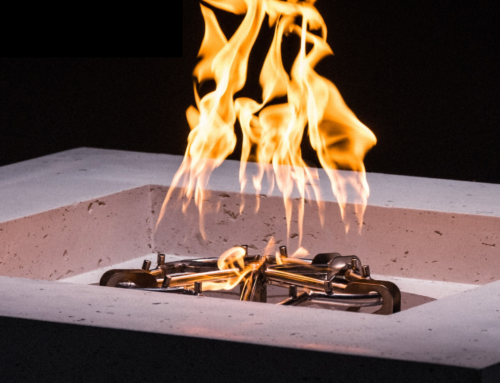Introduction: New School Solenoid Valve Enhancing Performance of HPC Designs
HPC Fire Inspired is always looking to raise the bar by making improvements to our outdoor fire feature designs. The recent release of HPC’s fire Inspired latest layout for the new Electronic Ignition Valve Box has truly upped the ante. The new Solenoid valve is a critical component as its’ valve assembly has expanded what HPC can offer our consumers.
HPC has been gearing up for this change and is excited about the Solenoid Valves’ performance. In this Tech Talk, we will address the reason for the change distinguishing the differences between the old and new valves providing consumers with education of the role the valve plays in enhancing the inner workings of our fire appliances.
How The Solenoid Valve Operates:
Solenoid valves are electrically actuated valves that are used to control the flow of gas in a piping system. The solenoid valve utilizes an electromagnet to operate a plunger or armature. When an electrical current is introduced to the coil, a magnetic field around the coil draws the plunger towards the coil. This plunger is used to open and close the flow of air, gas or fluid through the valve.
Why The Switch?:
The driving force behind the new valve design paired with HPC’s Electronic Ignition Series was to offer our consumers more options. The Honeywell diaphragm based valve needed to be housed to protect it from outdoor elements. In turn, this factor required engineers to design a larger valve box to maintain performance reliability. Therefore, HPC needed to look elsewhere to develop a valve that was not only safe and reliable but could be housed within a sleeker design. The transition to the solenoid valve proved to check all the important boxes. HPC’s solenoid valve is certified to be utilized outdoors. It is made from robust material and allows it to remain resistant to outdoor elements maintaining its’ performance reliability.
Design Change:
The solenoid valve is installed under the pan and is a separate component from the valve box; whereas, the Honeywell valve needed to be housed which required a larger valve box. The development of the solenoid type valve achieved a more compact design giving engineers the space needed to house HPC’s operational equipment in smaller appliances and enclosures as well as enhance reliability and performance.
Reliability:
HPC stands by our equipment guaranteeing it will Light Every Time. So ensuring that the new design was reliable was of utmost importance to our team. Comparing how the valves operate allows one to see where the Honeywell valve may be more vulnerable as compared to the new robust solenoid valve.
The diaphragm-based Honeywell valve is more complicated in its function and is susceptible to damage from moisture. The new solenoid valve assembly is more simplistic has fewer moving parts and is designed specifically to be used outdoors.
The Honeywell valve utilizes a diaphragm that is made from a thin membrane. HPC’s Tech Team has fielded issues around the Honeywell valve in instances where consumers neglected to check gas pressure. The Honeywell valve’s reliability depends on the membrane remaining operational. Any type of tear in the diaphragm could cause the valve to malfunction. For example, when the Honeywell valve is connected to gas pressure exceeding the recommended limits tears in the lining may occur causing an issue with the function of the valve. Verifying gas line pressure to the appliance is imperative. An added bonus to utilizing the solenoid valve is its’ operating system is not prone to pressure damage like the Honeywell valve. Therefore, if an appliance utilizing the solenoid valve is hooked to higher pressure it will not default, making the solenoid more reliable within the field.
Serviceability:
Serviceability is another key aspect of an HPC Fire Inspired designed fire feature. The original EI design placed the Honeywell valve deep inside the valve box, in which many parts or components had to be removed to replace the valve. The new solenoid design keeps the valve separate from the control box. This makes a valve assembly replacement or maintenance a much easier and quicker process for technicians.
Customer Service:
The transition to the Solenoid valve has opened new opportunities for designs as well as increased functionality and reliability. HPC Fire Inspired is dedicated to servicing our customers delivering safe, reliable designs that stand the test of time. Our team prides itself on listening to consumer feedback. Our customer relationships drive us to keep improving our designs to further enhance customer experiences.
Reach out to our team at 937-436-9800. Our NFI certified tech department is ready and willing to field questions, concerns and listen collaboratively to feedback. HPC believes that customer service doesn’t stop after sales are complete and we offer ongoing support.





